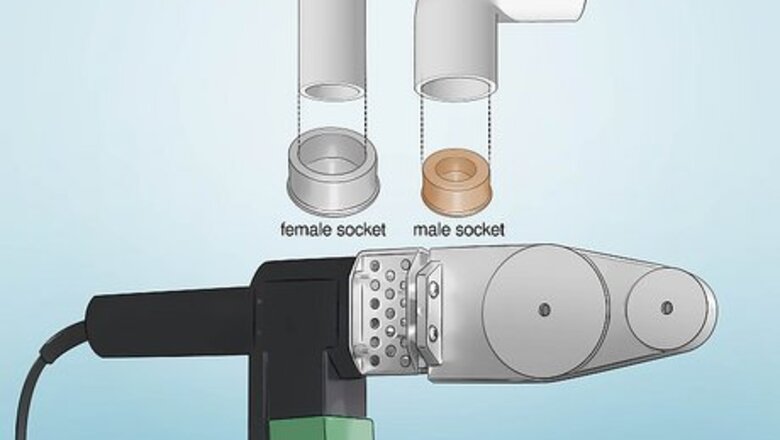
views
Heating the Fusion Tool and Preparing the Pipe
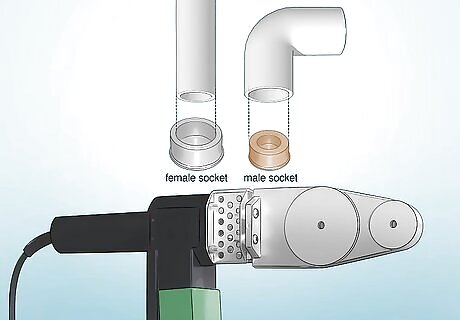
Place the right-sized sockets onto the fusion tool. Most PPR fusion tools come with pairs of male and female sockets of various sizes, which correspond to common PPR pipe diameters. So, if you’re using PPR pipe that's 50 millimetres (2.0 in) in diameter, choose the socket pair marked for 50 mm. Handheld fusion tools can usually handle PPR pipes ranging from 16 to 63 millimetres (0.63 to 2.48 in), while bench-mounted models can handle pipes up to at least 110 millimetres (4.3 in). You can find various models of PPR fusion tools online, ranging in price from around $50 to over $500 USD.
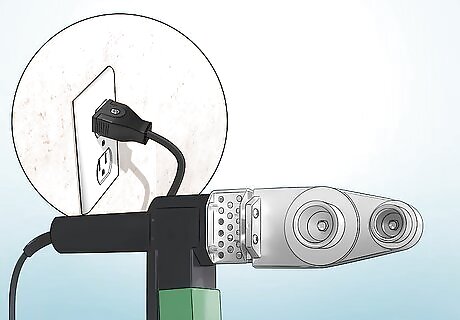
Plug in the fusion tool to begin heating the sockets. Most fusion tools will plug into a standard 110v outlet. The tool will either start heating immediately, or you may have to turn on a power switch. Models vary, but it will likely take several minutes for the tool to heat the sockets to the necessary temperature. Be very careful around a hot fusion tool and make sure everyone in the area knows it’s on and hot. The sockets reach temperatures of over 250 °C (482 °F) and can cause severe burns.
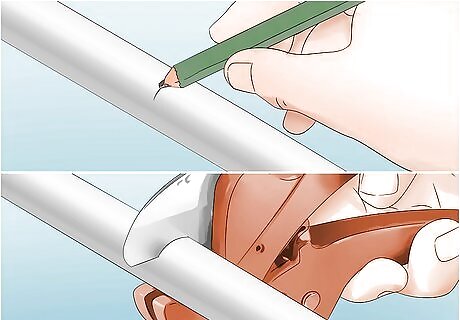
Trim your pipe to length with a smooth, clean cut. While the fusion tool heats, mark and cut your pipe to the desired length using an effective tool to obtain a clean cut which is perpendicular to the axis. Many fusion tool sets come with a trigger- or pincer-style pipe cutter. When used according to the directions, these will create smooth, even cuts in PPR that are ideal for fusion welding. PPR pipe can also be cut with a variety of hand or power saws, or wheel-style pipe cutters. However, make sure the cuts are as smooth and even as possible, and clear away any burrs with fine-grit sandpaper.
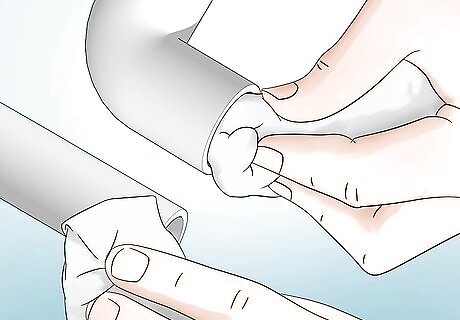
Clean the PPR pieces with a cloth and the recommended cleaner. Your fusion tool kit will likely recommend, and may even come with, a specific cleaner to use with PPR pipe. Use this cleaner as directed on the outside of the pipe and the inside of the fitting to be joined. Let the pieces dry for a few moments. If you don’t know what type of cleaner to use, contact the manufacturer of your fusion tool.
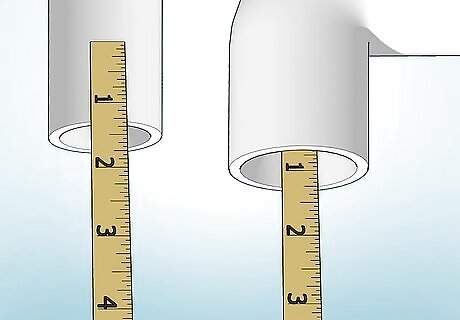
Mark the welding depth on the joining end of the pipe. Your fusion toolset will likely come with a template for marking the proper welding depths onto various diameters of PPR pipe. Use a pencil to make the corresponding mark on the pipe. Alternatively, you can stick a tape measure into the pipe fitting you’re using (e.g., an 90-degree elbow fitting) until it hits the small ridge inside the fitting. Subtract 1 millimetre (0.039 in) from this depth measurement and mark it as the welding depth on your pipe.

Confirm that the fusion tool is fully heated. Many fusion tools have a display that tells you when the tool is heated and ready to go. The target temperature is typically 260 °C (500 °F). If your fusion tool doesn’t have a temperature display, you can use a probe-style or infrared thermometer to read the temperature on the sockets. You can also buy temperature indicating sticks (e.g., Tempilstik) at welding supply stores. Choose sticks that will melt at 260 °C (500 °F) and touch one to each socket.
Heating the Pipe and Fitting on the Fusion Tool
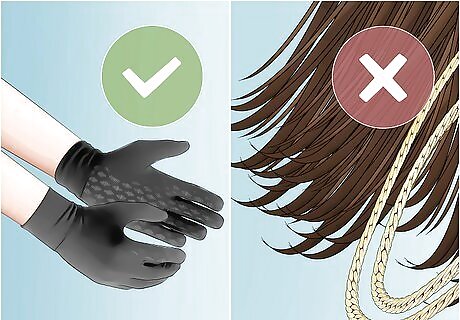
Protect your skin from the very hot fusion tool. Before you start softening PPR pipe on the fusion tool, put on heat-resistant work gloves and long sleeves. Also, tie back any loose hair and remove any dangling jewellery. Temperatures of over 80 °C (176 °F) can cause severe skin burns in less than a second, and the fusion tool heats up to 260 °C (500 °F).
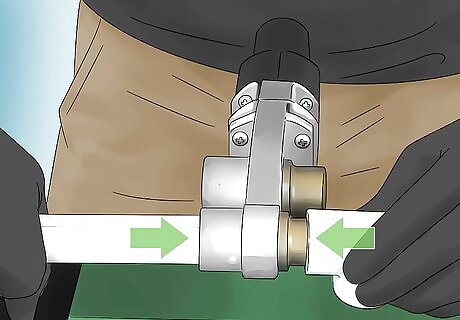
Press the PPR pieces straight into/onto their respective sockets. If you have a table-mounted fusion tool, hold the pipe in one hand and the fitting in the other so you can insert them simultaneously. If you have a handheld fusion tool, insert one piece then the other in rapid succession. Hold and insert the pieces straight in line with the sockets, not at an angle. Push the pipe into the female socket until you reach the depth marking you put on it. Push the fitting onto the male socket until it touches the ridge or line marked on the socket.
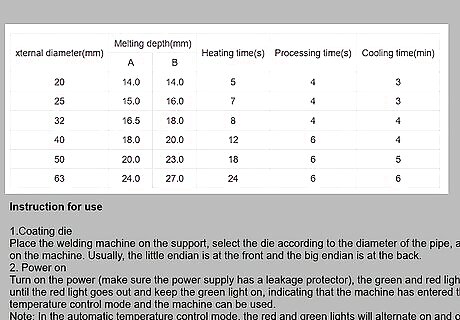
Start the heating timer if your model has one. Many fusion tools have built-in timers that will signal when your chosen diameter of PPR is ready to remove from the sockets. Refer to your owner’s manual for instructions on how to activate the timer. For some models, you might punch in the correct pipe diameter first, then the timer will activate automatically when you place the PPR pieces on the sockets. If your model doesn’t have a built-in timer, refer to the heating directions in the manual and use a watch or clock to time the heating process. Heating times can vary, with larger diameter pipes often taking a bit longer than smaller ones.
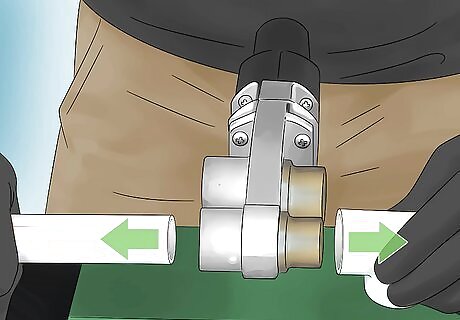
Pull the PPR pieces straight off/out of the sockets. Just like when you put them in place on the sockets, don’t remove the pipe or fitting at an angle. Otherwise, you’ll deform the softened, nearly gooey PPR. Pull the pieces off as soon as the alarm sounds or they’ve reached their heating time. Otherwise, the ends will deform and melt.
Fusing the Pipe and Fitting into One Piece

Push the pipe and fitting straight together immediately. As soon as you remove them from the fusion tool, insert the pipe straight into the fitting until it reaches the depth line marked on it. Don’t insert the pipe at an angle, and don’t twist either piece — just push the pipe straight in. Don’t wait more than 3-4 seconds before joining the pieces together. People often twist PVC pipe pieces a bit when joining them in order to spread around the cement, but resist this urge with PPR. You risk deforming the pipes and/or ruining the fusion process.

Hold the fused pipe pieces in place for 30 seconds. PPR pipe heats very quickly and cools very quickly. Within 30 seconds, the pieces will have cooled enough to have fused into one piece of PPR pipe. You can then put the fused pipe down and move on to your next task. If you were to cut through the joint once the fused pipe completely cools, you wouldn’t be able to tell where one piece ended and the other began. They have melted and reformed into a single piece of PPR pipe.
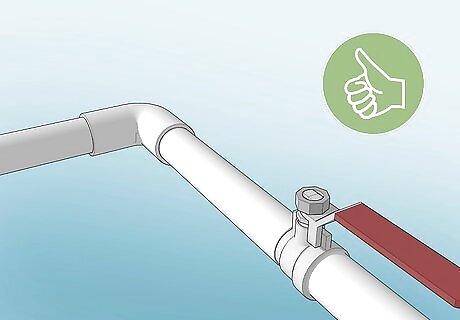
Put the pipe into service after it cools completely. Once the fused PPR pipe cools to room temperature again, it is ready to withstand its rated water pressure. Once your plumbing system is fully installed, you can turn on the water and check for leaks — but there won’t be any! PPR pipe should cool completely within 10-15 minutes at most.




















Comments
0 comment